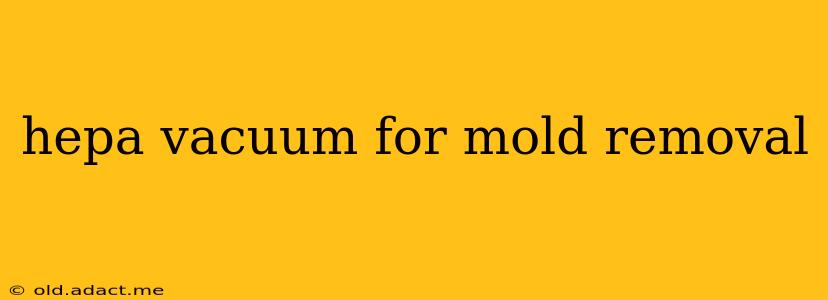Mold infestations are a serious health concern, and proper remediation requires specialized tools and techniques. A HEPA vacuum cleaner plays a crucial role in this process, effectively removing mold spores and preventing their spread. This comprehensive guide will explore the importance of HEPA vacuums in mold removal, addressing common questions and offering expert advice.
What is a HEPA Vacuum and How Does it Work?
HEPA stands for High-Efficiency Particulate Air. A HEPA vacuum cleaner is equipped with a filter that captures at least 99.97% of airborne particles with a size of 0.3 microns or larger. This is crucial for mold removal because mold spores are microscopic and easily become airborne, spreading throughout a home and causing respiratory problems and allergies. The vacuum’s powerful suction draws in mold spores and other particles, trapping them within the HEPA filter, preventing them from recirculating back into the air. This differs significantly from standard vacuum cleaners, which often allow a substantial amount of microscopic particles to escape through the exhaust.
Does a HEPA Vacuum Remove All Mold?
While a HEPA vacuum is an essential tool in mold remediation, it's crucial to understand its limitations. It effectively removes mold spores from surfaces and the air, but it doesn't eliminate the mold source itself. Mold thrives on moisture, so addressing the underlying moisture problem is paramount. A HEPA vacuum is part of a larger remediation strategy. Simply vacuuming won't solve a deep mold infestation; you'll need to identify and address the source of the moisture, often requiring professional help for extensive problems.
What Type of HEPA Vacuum is Best for Mold Removal?
Choosing the right HEPA vacuum for mold removal depends on the size of the affected area and the severity of the infestation. For smaller areas, a handheld or canister HEPA vacuum might suffice. For larger areas or severe infestations, a powerful upright HEPA vacuum with a dedicated HEPA filter replacement system is recommended. Look for features like:
- Strong suction: Essential for effectively removing embedded mold spores.
- HEPA filter: Ensures maximum particle capture.
- Sealed system: Prevents air leakage and recirculation of particles.
- Easy-to-empty dustbin: Reduces the risk of exposure during cleanup.
- Multiple attachments: For cleaning various surfaces and crevices.
Can I Use a Regular Vacuum for Mold Removal?
Using a regular vacuum for mold removal is strongly discouraged. Standard vacuum cleaners lack the filtration capabilities of a HEPA vacuum, meaning they often re-circulate mold spores into the air, potentially worsening the problem and increasing exposure. This can exacerbate health risks for individuals sensitive to mold. Always opt for a dedicated HEPA vacuum for mold remediation.
How Often Should I Replace the HEPA Filter in My Vacuum?
HEPA filter replacement frequency depends on the usage and severity of the mold infestation. Manufacturers' guidelines should be followed, but typically, you should replace the filter after each significant use during mold remediation or at least every 3-6 months, depending on usage frequency. A clogged filter reduces the vacuum's efficiency, compromising its ability to remove mold spores effectively.
What Precautions Should I Take When Using a HEPA Vacuum for Mold Removal?
Mold removal can expose you to harmful spores, so it's essential to take proper precautions:
- Wear protective gear: This includes an N95 respirator mask, gloves, and safety goggles.
- Ventilate the area: Open windows and doors to improve air circulation.
- Work in sections: Avoid overwhelming yourself; work in smaller areas to manage dust and spores effectively.
- Dispose of the filter properly: Seal the used filter in a double-bagged plastic bag before disposal.
By understanding the role of HEPA vacuums in mold removal and taking appropriate precautions, you can significantly reduce the risks associated with mold exposure and contribute to a safer, healthier home environment. Remember, always address the underlying moisture problem and consider professional help for extensive mold infestations.
